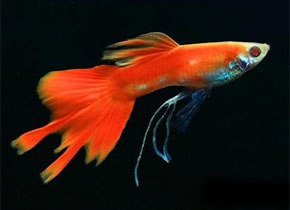
像蛇一样敏感的温度传感器
Researchers have developed a heat sensor that can detect temperature changes of just ten thousandths of a degree Celsius—comparable with the sensitivity of pit vipers. Christopher Intagliata reports.
据克里斯托弗·因塔利亚塔(Christopher Intagliata)报道,研究人员发明了一种能够检测温度变化百分之一摄氏度的温度传感器,敏感度可与蝮蛇媲美。
撰文\播音:克里斯托弗·因塔利亚塔(Christopher Intagliata)
翻译:杨枭
审校:丁可含
One of the most exquisite heat sensors in the world—it’s not in some government lab. It's in the head of a snake. The pit viper, to be specific.
世界上最精密的温度传感器之一不在某个政府的实验室中,而在蛇的脑中。更准确地说,是蝮蛇的。
"They're incredibly sensitive. They beat any of the synthetic counterparts, even the most expensive semiconducting systems used in infrared or thermal cameras today." Chiara Daraio, a materials scientist at Caltech. "They can effectively resolve a few millikelvin of temperature changes at a distance of up to a meter."
“它们的敏感度可以击败任何人造传感器,即使是今天在红外或热像仪中使用的最昂贵的半导体系统。加州理工学院的材料科学家Chiara Daraio说:“它们可以有效地探测到距离一米以外的几毫开氏温度的变化。”
Now Daraio and her colleagues have designed a heat-sensing material that competes with the sensitivity of the snake. Using pectin. Same stuff you used to thicken jam. “Pectin, a double-stranded molecule ubiquitously present in the outer cell wall of plant cells, acts effectively as a tiny molecular temperature sensor." When temperatures go up, she says, the double-stranded molecule unzips, "like the zipper of a jacket."
现在,Daraio和她的同事们设计了一种可以与蛇的灵敏度相抗衡的感热材料。这种材料使用了果胶,它也用来增强果酱的粘稠度。“普遍存在于植物外细胞壁的双链分子果胶是一种有效的微小分子温度传感器。当温度升高时,双链分子就像夹克拉链一样解开。”
So they did what you usually do with pectin—they made jelly, using pectin, water and calcium ions. They dried that out, and got a thin, transparent film. Then, they had to test it. Which they realized they could do using a microwave and her son’s teddy bear. "Which can be heated up to a temperature of 37 degrees, roughly the temperature of a mouse or a running prey for a snake."
他们用果胶、水和钙离子做了果冻。然后将果冻榨干,得到了一个薄而透明的胶片来接受检测。这时她们意识到可以利用微波炉和她儿子的泰迪熊。“将泰迪熊加热到37摄氏度,这大概是一只老鼠或是蛇所追赶的猎物的体温。”
And the pectin film was exquisitely sensitive to the warmed-up teddy bear—on par with the snake. The film could detect temperature changes as small as 10-thousandths of a degree celsius. The study is in the journal Science Robotics. [Raffaele Di Giacomo et al., Biomimetic temperature-sensing layer for artificial skins]
果胶胶片对加热了的泰迪熊非常敏感,甚至可以与蝮蛇不相上下。胶片可以检测百分之一摄氏度的微小变化。研究发表在《科学·机器人学》上。
Daraio says the skin could give robots superior sensing abilities. "Allowing for example robots to determine whether they're moving around inanimate objects, other robots, or even humans or animals, which are evidently warmer bodies." Or, she says, it could be used in sensitive skin on prosthetic limbs for humans. If we can figure out how to connect this artificial skin up to something far more complicated. The brain.
Daraio说:“皮肤可以给机器人更好的感知能力。举例来说,机器人由此可以检测周围是无生命体、其他机器人还是人类或动物,因为人类和动物显然温度更高。它还可以用于人类假肢的感觉皮肤。如果我们可以弄清更复杂的一环——大脑感知与人造皮肤的联系。”
未经书面许可任何人不得复制或镜像
京ICP备11000850号-1
 京公网安备11010502039775号
京公网安备11010502039775号 信息网络传播视听节目许可证0111611号
国家科技基础条件平台

















